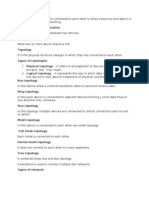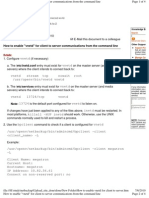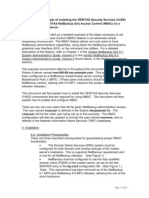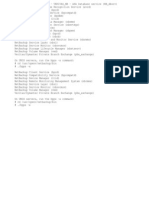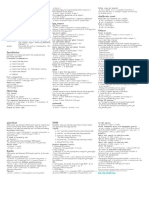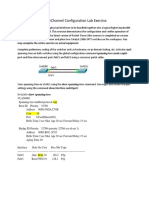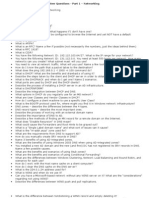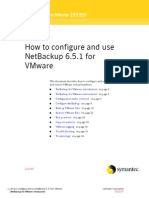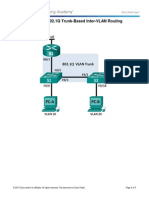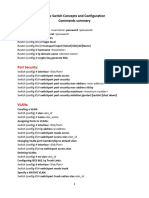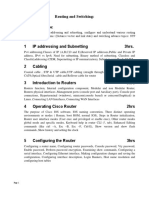0% found this document useful (0 votes)
148 views20 pagesNetwork Configuration Commands
- The document provides configuration examples for various networking and routing protocols and features including VLANs, trunking, etherchannels, spanning tree, DHCP, routing, EIGRP, OSPF, access control lists, and network address translation.
- Examples are given for showing VLAN configurations, port assignments, operational modes, trunks, etherchannels, spanning tree status and configurations, DHCP server creation, routing tables, EIGRP interface status, neighbor tables, topology tables, OSPF neighbor status, interface configurations, access control list configurations for various protocols, and dynamic network address translation configuration.
Uploaded by
Norbert OngCopyright
© © All Rights Reserved
We take content rights seriously. If you suspect this is your content, claim it here.
Available Formats
Download as DOCX, PDF, TXT or read online on Scribd
0% found this document useful (0 votes)
148 views20 pagesNetwork Configuration Commands
- The document provides configuration examples for various networking and routing protocols and features including VLANs, trunking, etherchannels, spanning tree, DHCP, routing, EIGRP, OSPF, access control lists, and network address translation.
- Examples are given for showing VLAN configurations, port assignments, operational modes, trunks, etherchannels, spanning tree status and configurations, DHCP server creation, routing tables, EIGRP interface status, neighbor tables, topology tables, OSPF neighbor status, interface configurations, access control list configurations for various protocols, and dynamic network address translation configuration.
Uploaded by
Norbert OngCopyright
© © All Rights Reserved
We take content rights seriously. If you suspect this is your content, claim it here.
Available Formats
Download as DOCX, PDF, TXT or read online on Scribd
/ 20



